Also, while I’m at it, what really does make the Woking workforce tick? I was able to spend some time with the car’s designer, Frank Stephenson, as well as admire Executive Chairman Ron Dennis’s new steel, glass and white-tiled McLaren Production Centre, now in full swing with the most perfect cars now gliding effortlessly off the production line.
You can take racetrack-related information-overload out of the driving impressions but you can’t take the car away from the track: as, on this occasion our venue for half the day was Dunsfold aerodrome, the famous ‘Top Gear Track’.
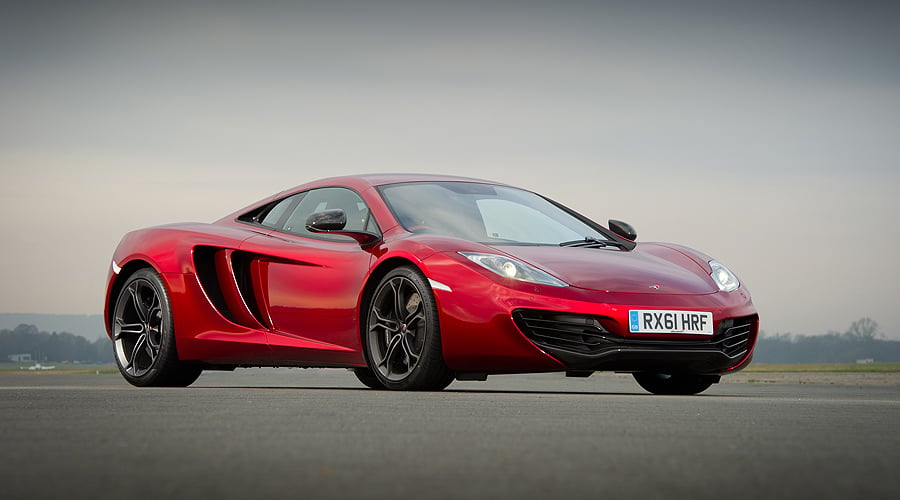
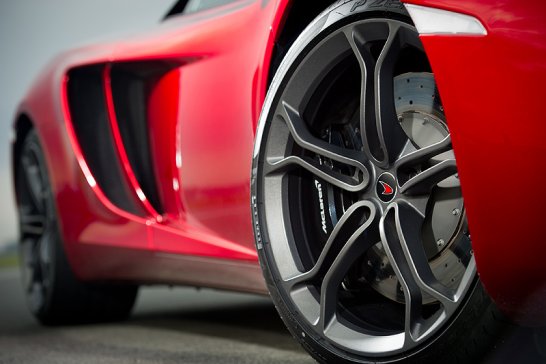
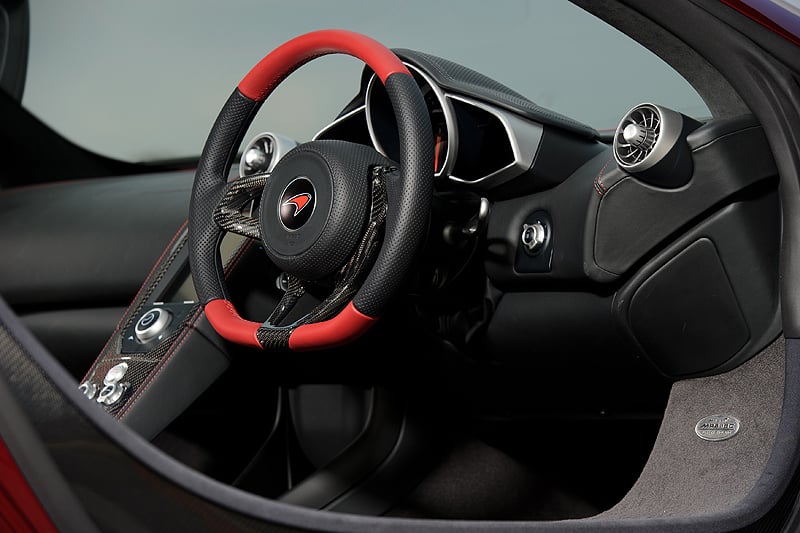
McLaren has used Dunsfold extensively to develop the new 12C. It’s only a 40-minute drive from Woking and has a balance of fast straights, uneven tarmac and tricky on/off-camber corners to allow the test-driving team, led by Chris Goodwin, to really hone the car’s capabilities.
The result is a 1:16.2 lap by ‘The Stig’, trouncing everything bar the hardly practical Ariel Atom V8.
I spent quite a bit of time on the track with Goodwin, and fellow racing driver Phil Quaife, both as a passenger and behind the wheel. As with many things on TV, from the driving seat it does not look quite the same as on the screen on Sunday evenings… but it’s still a good test of car and driver.
Whether Goodwin is driving in ‘auto mode’ , carefully explaining each step in the development process, changing the settings as he drives, or Quaife is out in the LHD, carbon-braked orange car ‘setting a time’, you can only be amazed by the 12C’s capabilities.
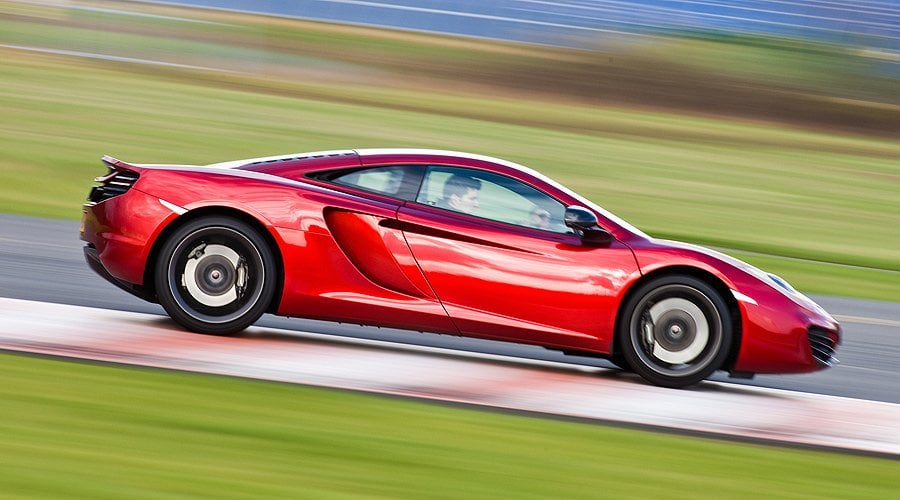
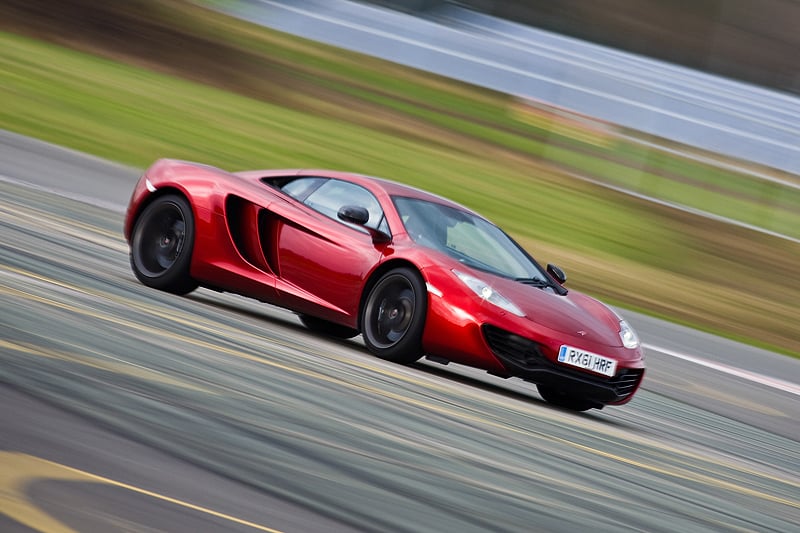
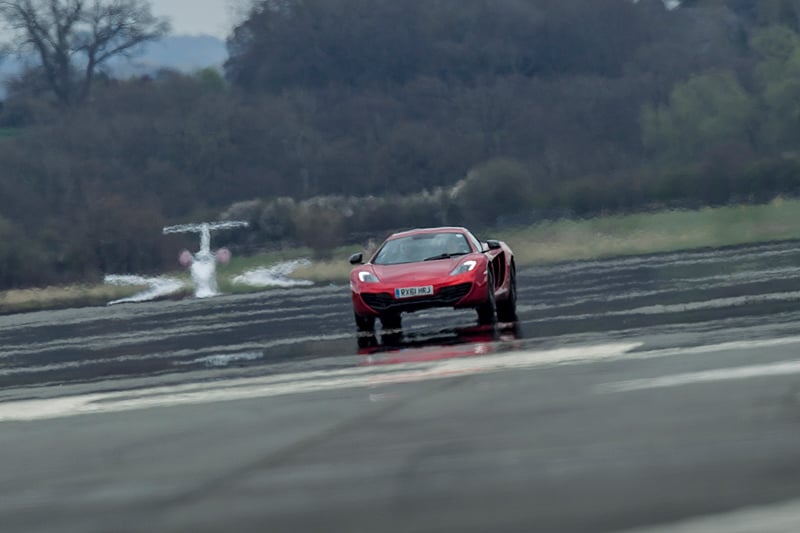
Yes, they are both unbelievably fast, and will be quick in anything, but a few laps with Quaife really ‘on it’ demonstrates the fireball-like nature of the punchy turbocharged V8, the 12C’s limpet-like handling and the massively powerful brakes. In fact, I was almost more impressed with the stopping side of things, than the going – a really quick lap is achieved by carefully negotiating the slower corners, inch-perfect for line, then flooring the throttle at the earliest possible moment leaving braking to the last.
The air-brake really helps with this, exerting more downward pressure at the rear, countering the weight transfer frontwards and thus allowing all four discs to do their work, not just the fronts.
When it’s my turn, it’s soon clear that this is one very clever car, a machine that really looks after you in extremis – except that I never neared that point, and what I really liked was that you can drive it as if on rails, or you can be a bit of a hooligan, too. It will slide, particularly out of tightish corners, attacking the ensuing straight that much earlier and cutting further micro-seconds from the lap time.
(And if you’re interested, YES, McLaren had timing equipment running, but NO, I’m not going to reveal my efforts. Well, maybe another time: we have the video footage safely locked away for now.)
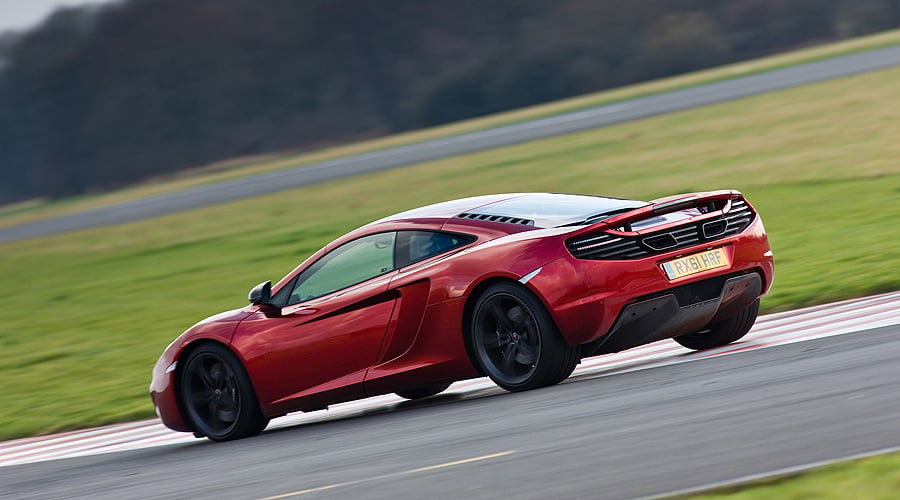
So, it’s incredibly quick on a track (the McLaren badge is a bit of a giveaway, there). But, while the A272 from Dunsfold to Billingshurst might not test car and driver as much as ‘Chicago’ and the ‘Hammerhead’, it is the Real World.
You know, the driving to the station, picking the kids up, two-up cruising to Monaco, a winter holiday in Chamonix: it’s what we want our cars to do (effortlessly, reliably and economically if possible) day in and day out.
Here’s where the supercar manufacturers have a problem. How does one reconcile everyday practicality (which most say they have now) with all the marketing guff of ‘the ultimate experience’?
It’s tricky. However, right from the word go, McLaren was at pains to build a mid-engined GT that really could be driven every day. If the clients chose not to, well, that’s their call.
And I think the result is a success. It feels small. The seating position is perfect, straight-legged with the steering wheel dead ahead. Visibility is excellent from the generous front screen and airy cabin. It’s quiet, with the post-launch re-engineering of the engine and exhaust note allowing more visceral sounds into the cabin when the Active Dynamics Panel powertrain switch is set to ‘Sport’.
The ride is brilliant, too – in the scheme of fast-car-with-very-big-wheels things, it’s almost in Bentley territory. And, of course, when circumstances allow, you can despatch whole lines of traffic with a quick down-change, using the broad band of power and torque. Without getting all figuresey, 600Nm/443lb ft torque is available from 3,000 to 7,000rpm so it’s low-down practical and top-end paralysingly fast.
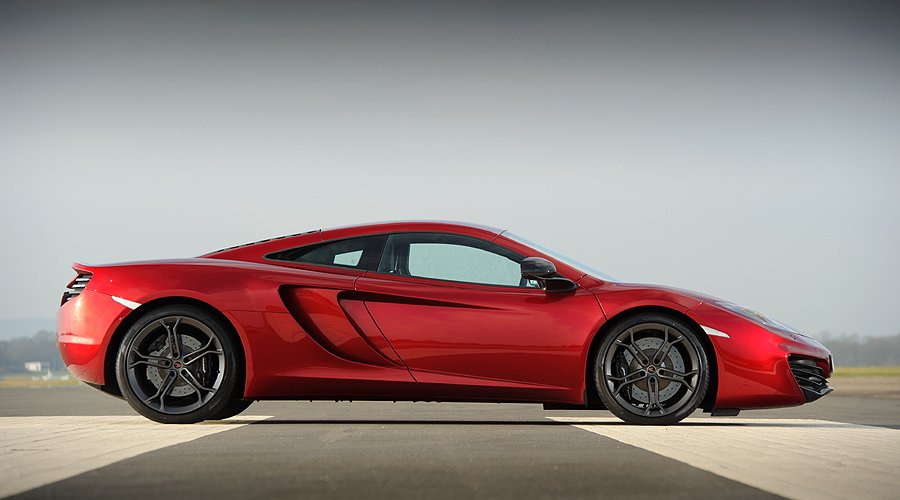
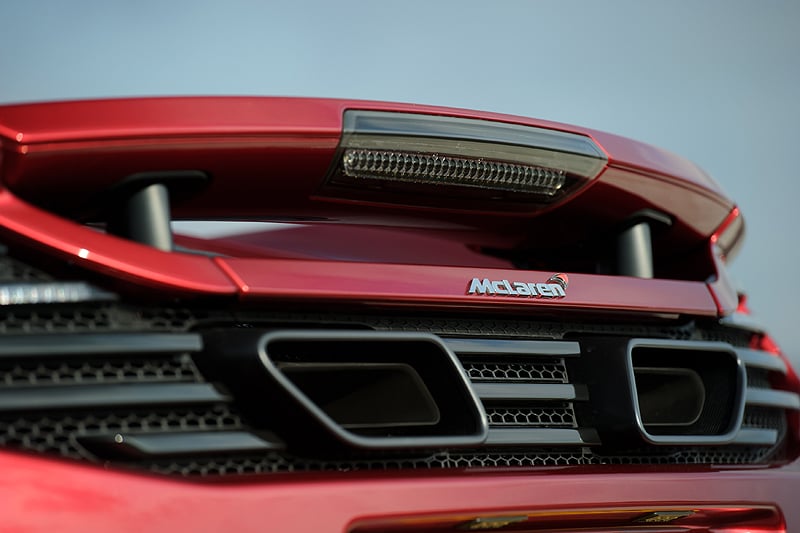
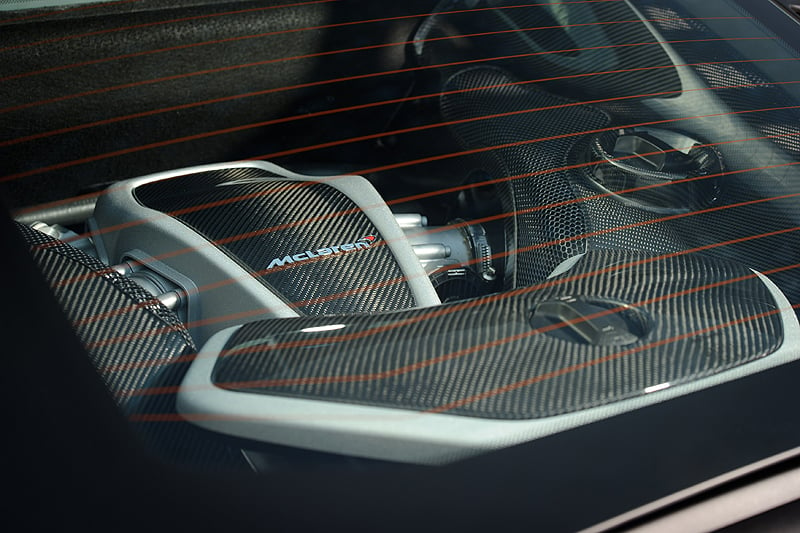
The paddle gearchange, with its quite hard ‘pull’ to engage, makes more sense on the track with gloved hands, but I am sure it will be second-nature to an owner after a week or so. The same is true of the scissor doors, which required a hefty tug (on these cars straight from the production line) to close, and an affinity with Mr Spock to open from the outside. They feature a concealed patch that you ‘stroke’ open, willing the lock to unclick, almost by force of mind.
The interior is well-finished and stylish (I prefer the bare, ‘Bang & Olufsen’ type set-up) and from the outside it looks fabulous. Well done, Mr Stephenson, it’s a timeless design that will age well, and looks even better on the road. Having the opportunity to tour the all-new factory, I’d have had almost any of the cars in final finishing, be they white, dark blue, McLaren Orange or, in particular, the Volcano Red example you see here.
Some 1,000 cars have already been built. The company’s reputation for thoroughness is world-famous, which in my opinion does not always do them favours. While no-one wants their car to be built the ‘old way’, on a bed of iron filings and empty crisp packets, they do want some human interest, they want the passion, the tradition and the sweat-stained racing drivers drinking victory champagne.
Believe me, McLaren Automotive has this by the bucket-load. It might be a grey bucket, one destined to fit in an exact sequence on Dennis’s famous immaculately tiled floor-space, but a well-filled bucket nonetheless. Talking with Stephenson over dinner, the man sure knows his cars and we went through a check-list of the ‘greats’, with the company’s own F1 right in there. He’s also an ex-motocrosser and runs an electric-powered slipper launch on the Thames, so he’s broad-minded in his passions and good company, to boot.
The fact that any one of the rank of modern Formula 1 cars lined up in the spotless Woking offices has an extra aerodynamic twiddly bit here or there interests me little. But the passion and sheer determination of every single employee who was involved in that winning car is there for all to see, and it’s now concentrating its full focus on the MP4-12C road cars.
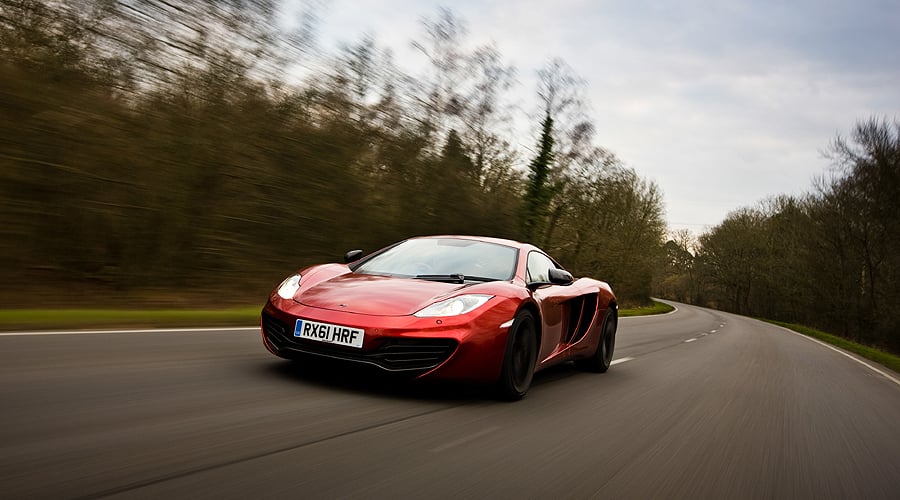
Few other dealer networks are required to carry EVERY spare part in stock. McLaren dealers are. Christian Marti, Regional Director Europe at McLaren Automotive Ltd, told the story of an agent changing a customer’s engine in one day. Which proves that: a) they really do look after their customers, and b) McLaren is big enough to admit to the odd fault, and back its customers and its franchises all the way.
It could not exist in a world where Ferrari and Porsche (the marques McLaren is most eager to gain conquest sales from) also offer good customer service. And that can also include being part of the ‘family’: visits to the factory, the opportunity to join ‘closed’ events such as F1 testing, or simply driving at Goodwood.
You see, what you get with the 12C is really two cars; the two faces of the company, if you like. One is all corporate identity and crushing technicality (trust me, the car is brilliant, just drive it and don’t worry about the settings), the other is nigh-on 50 years of racing success (only exceeded by Ferrari) in all areas of the sport, achieved by a hard-working team of truly passionate individuals.
So that’s a pair of 205mph cars for under £200k. Sounds good to me.
Photos: McLaren
Video: McLaren, Edited by: Kai Klinke













